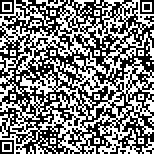下载中心
优秀审稿专家
优秀论文
相关链接
摘要

Landsat热红外系列数据一直是地表温度反演重要的遥感数据源,目前用于地表温度反演的单窗算法主要针对Landsat TM/ETM+第6波段数据(TM 6)建立的,Landsat 8热红外传感器(TIRS)与TM 6相比有很多变化,因而其单窗算法也需要改进。本文以Landsat 8 TIRS第10波段(TIRS 10)为数据源,提出了针对TIRS 10的单窗算法(TIRS10_SC),并对研究区地表温度进行反演研究,确定了研究区不同类型地表的温度值。研究结果表明:(1)TIRS10_SC算法可以较好地应用于Landsat 8数据的地表温度反演,平均反演误差为0.83℃,相关系数为0.805,反演温度与模拟数据和实测数据都具有较好的一致性;(2)通过对单窗算法中的地表发射率、大气水汽含量和大气平均作用温度等参数敏感性分析发现,TIRS10 SC算法能够获得较为可靠的反演结果;同时,TIRS10 SC算法对大气水汽含量和地表发射率敏感性较高,对大气平均作用温度敏感性稍弱。该算法对于利用Landsat 8 TIRS数据快速反演地表温度具有应用价值。
Land Surface Temperature(LST) is a significant surface biophysical variable. This parameter is also important in various fields such as urban thermal environment, agricultural monitoring, surface radiation, and energy balance. Data from Landsat satellites are vital remote sensing data for LST retrieval since the 1980s. The present Landsat 8 Thermal Infrared Sensor(TIRS) imagery provides a new data source for LST retrieval. Landsat 8 TIRS is improved compared with the Landsat 6 Thematic Mapper. Landsat 8 data are extensively applied, so the mono-window algorithm should be updated with new sensor characteristics. Therefore, we aim to explore an adaptive method with more reliable accuracy to retrieve LST using Landsat 8 TIRS data. In this paper, a relation model(TIRS10_SC)was established between LST and several parameters, namely, brightness temperature, mean atmospheric temperature, atmospheric transmittance, and land surface emissivity. The model was based on the radiative transfer equation and characteristics of Landsat 8 TIRS10. The LSTs of the study area were retrieved by initially deriving the atmospheric transmittance from MODIS data and MODTRAN simulation results. Then, the mean atmospheric temperature was obtained using empirical formulas, and land surface emissivity was retrieved from the Landsat 8 OLI data using image classification-based method. Finally, the LSTs of the study area were retrieved from the processed data.The algorithm and retrieval results were assessed by simulated and measured data. Meanwhile, the sensitivity of variables in themono-window algorithm was analyzed.Results show that the mono-window algorithm can perform well for Landsat8 TIRS data for LST retrieval. The LSTs of different land-cover types in study area varied. The LSTs of bare soil and cements were evidently higher than those of the vegetated areas. The LST of the former varied between 24.12℃ and 32.25℃, whereas that of latter ranged from 10.72℃ to 19.79℃. Furthermore, compared with the measured data, the average error and correlation coefficient of retrieved LSTs were 0.83℃ and 0.805, respectively. The accuracy of the algorithm was also assessed using simulated data, which showed that the error in the LST data in the majority of cases ranged between 0.2℃ and 0.3℃. The retrieval results agree with the assessed temperature data. Results from the analysis of the sensitivities of land surface emissivity, atmospheric water vapor content, and average temperature showed that the TIRS10_SC algorithm can obtain more reliable results with higher sensitivities for the former two para meters and lower sensitivity for the latter one. The proposed algorithm can be applied for the fast retrieval of LST using Landsat 8 TIRS data.

